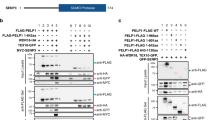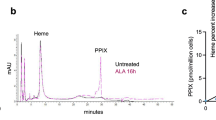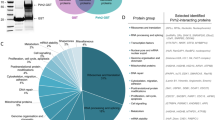Abstract
WWOX, the gene that maps to common chromosomal fragile site FRA16D, is frequently affected by aberrations in multiple types of cancers. WWOX encodes a 46 kDa protein that contains two WW domains and a short-chain oxidoreductase (SDR) domain. We recently demonstrated that ectopic expression of WWOX inhibits xenograft tumor growth of tumorigenic breast cancer cells. Little is known of the biochemical function(s) of WWOX. The SDR domain is predicted to be involved in sex-steroid metabolism and the WW domains are likely involved in protein–protein interactions. In this report, we identify the specific proline-rich ligand for WWOX as PPXY and show that the amino-terminal WW domain is responsible for this interaction. Using the WWOX WW domains as a probe, we screened high-density protein arrays and identified five candidate-binding partners. The binding to one of these candidates, small membrane protein of the lysosome/late endosome (SIMPLE), was further analysed, and we observed that a specific PPSY motif in the SIMPLE amino-acid sequence was required to interact with the amino-terminal WW domain of WWOX. In addition, immunofluorescence staining demonstrated that endogenous WWOX and SIMPLE co-localize to perinuclear compartments of MCF-7 human breast cancer cells. These studies demonstrate that WWOX contains a Group I WW domain that binds known cellular proteins containing the specific ligand PPXY. Identification and characterization of WWOX interacting proteins will lead to an understanding of the biological functions of WWOX in normal and tumor cells.
This is a preview of subscription content, access via your institution
Access options
Subscribe to this journal
Receive 50 print issues and online access
$259.00 per year
only $5.18 per issue
Buy this article
- Purchase on Springer Link
- Instant access to full article PDF
Prices may be subject to local taxes which are calculated during checkout




Similar content being viewed by others
Abbreviations
- BCG-CWS:
-
Mycobacterium bovis Bacillus Calmette-Guerin
- ECL:
-
enhanced chemiluminescence
- JNK:
-
c-Jun N-terminal kinase
- LITAF:
-
lipopolysaccharide-induced transcription factor
- LOH:
-
loss of heterozygosity
- NEDD4:
-
neuronal precursor cells expressed developmentally downregulated protein 4
- NF-κB:
-
nuclear factor-kappa B
- NGS:
-
normal goat serum
- PIG7:
-
p53 inducible gene 7
- SDR:
-
short-chain dehydrogenase/reductase
- TNF:
-
tumor necrosis factor
- WBP-1:
-
WW domain-binding protein-1
- WWOX:
-
WW domain oxidoreductase
References
Bedford MT, Reed R and Leder P . (1998). Proc. Natl. Acad. Sci. USA, 95, 10602–10607.
Bedford MT, Sarbassova D, Xu J, Leder P and Yaffe MB . (2000). J. Biol. Chem., 275, 10359–10369.
Bednarek AK, Keck-Waggoner CL, Daniel RL, Laflin KJ, Bergsagel PL, Kiguchi K, Brenner AJ and Aldaz CM . (2001). Cancer Res., 61, 8068–8073.
Bednarek AK, Laflin KJ, Daniel RL, Liao Q, Hawkins KA and Aldaz CM . (2000). Cancer Res., 60, 2140–2145.
Bussow K, Cahill D, Nietfeld W, Bancroft D, Scherzinger E, Lehrach H and Walter G . (1998). Nucleic Acids Res., 26, 5007–5008.
Chan DC, Bedford MT and Leder P . (1996). EMBO J., 15, 1045–1054.
Chang N-S, Doherty J and Ensign A . (2003). J. Biol. Chem., 278, 9195–9202.
Chang NS, Pratt N, Heath J, Schultz L, Sleve D, Carey GB and Zevotek N . (2001). J. Biol. Chem., 276, 3361–3370.
Chen HI and Sudol M . (1995). Proc. Natl. Acad. Sci. USA, 92, 7819–7823.
Jolliffe CN, Harvey KF, Haines BP, Parasivam G and Kumar S . (2000). Biochem. J., 351 (Part 3), 557–565.
Kallberg Y, Oppermann U, Jornvall H and Persson B . (2002). Protein Sci., 11, 636–641.
Kasanov J, Pirozzi G, Uveges AJ and Kay BK . (2001). Chem. Biol., 8, 231–241.
Kay BK, Williamson MP and Sudol M . (2000). FASEB J., 14, 231–241.
Lu PJ, Zhou XZ, Shen M and Lu KP . (1999). Science, 283, 1325–1328.
Ludes-Meyers JH, Bednarek AK, Popescu NC, Bedford MT and Aldaz CM . (2003). Cytogenet. Genome Res., 100, 101–110.
Matsuda A, Suzuki Y, Honda G, Muramatsu S, Matsuzaki O, Nagano Y, Doi T, Shimotohno K, Harada T, Nishida E, Hayashi H and Sugano S . (2003). Oncogene, 22, 3307–3318.
Moriwaki Y, Begum NA, Kobayashi M, Matsumoto M, Toyoshima K and Seya T . (2001). J. Biol. Chem., 276, 23065–23076.
Otte L, Wiedemann U, Schlegel B, Pires JR, Beyermann M, Schmieder P, Krause G, Volkmer-Engert R, Schneider-Mergener J and Oschkinat H . (2003). Protein Sci., 12, 491–500.
Sambrook J and Russell DA . 2001. Molecular Cloning: A Laboratory Manual, Third edn Cold Spring Harbor Laboratory Press: Cold Spring Harbor, NY.
Sudol M and Hunter T . (2000). Cell, 103, 1001–1004.
Winfield SL, Tayebi N, Martin BM, Ginns EI and Sidransky E . (1997). Genome Res., 7, 1020–1026.
Acknowledgements
This work was supported by NCI RO1 CA 102 444, a NIEHS center grant ES07784 and a Pharmacia award.
Author information
Authors and Affiliations
Corresponding author
Rights and permissions
About this article
Cite this article
Ludes-Meyers, J., Kil, H., Bednarek, A. et al. WWOX binds the specific proline-rich ligand PPXY: identification of candidate interacting proteins. Oncogene 23, 5049–5055 (2004). https://doi.org/10.1038/sj.onc.1207680
Received:
Revised:
Accepted:
Published:
Issue Date:
DOI: https://doi.org/10.1038/sj.onc.1207680
Keywords
This article is cited by
-
Large-scale phage-based screening reveals extensive pan-viral mimicry of host short linear motifs
Nature Communications (2023)
-
WWOX and metabolic regulation in normal and pathological conditions
Journal of Molecular Medicine (2022)
-
Characterization of WWOX expression and function in canine mast cell tumors and malignant mast cell lines
BMC Veterinary Research (2020)
-
VOPP1 promotes breast tumorigenesis by interacting with the tumor suppressor WWOX
BMC Biology (2018)
-
GILP family: a stress-responsive group of plant proteins containing a LITAF motif
Functional & Integrative Genomics (2018)



